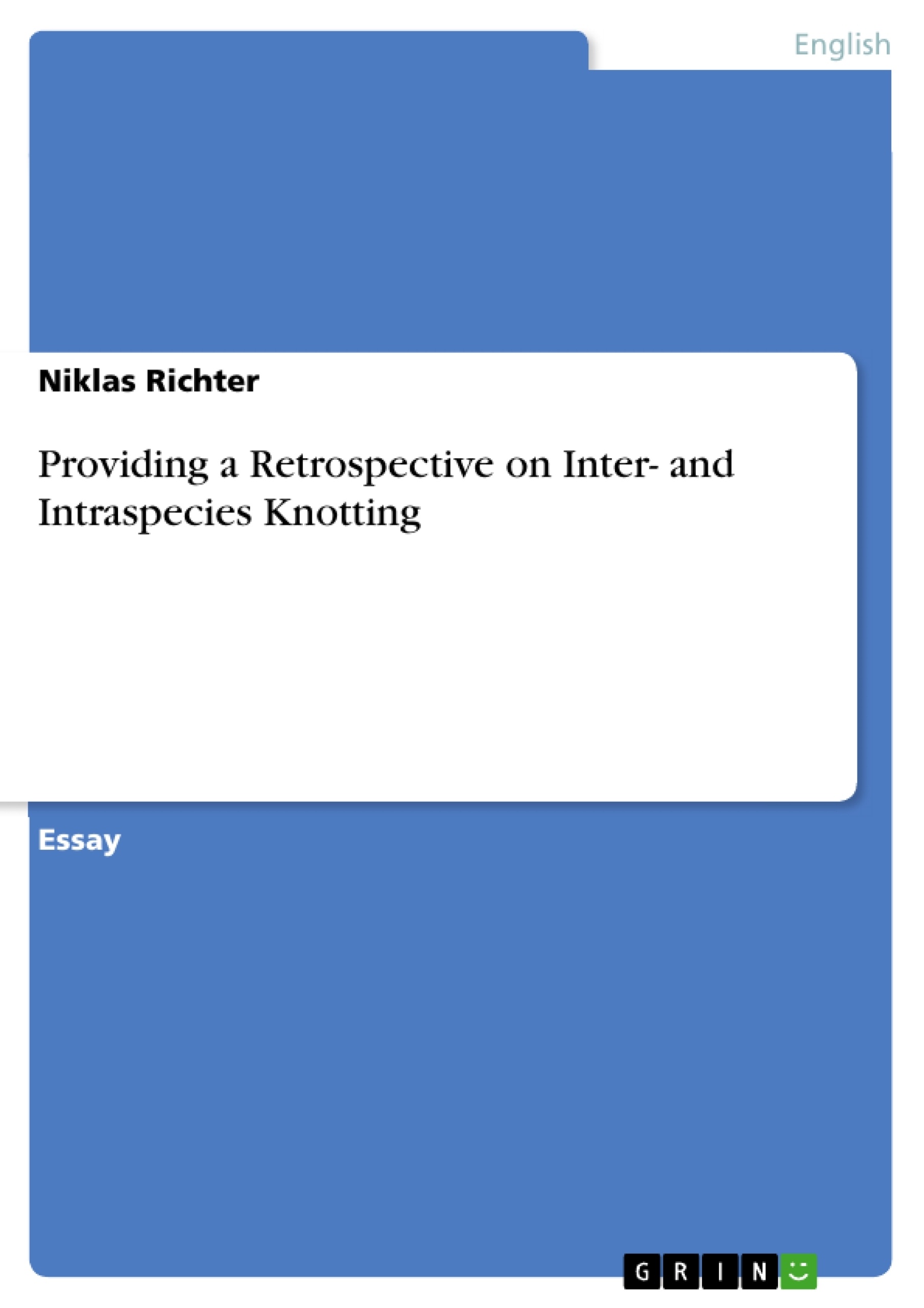This annotated bibliography serves as a summary and comparison of different journal articles on the topics of inter- and intraspecies knotting, meaning the connections a species shares in said species or across other species.
Setting the base for discussions on the topic of ‘interspecies knotting’, Deborah Bird Rose (2020) makes a conscious effort to highlight the vibrant connection between species of flora and fauna. In particular, she illustrates the temporalities of “ethical time” and its erasure at the example of the relation between flying foxes and myrtaceous flora, elucidating concepts of synchrony and sequence in their almost symbiotic connectedness.
Inhaltsverzeichnis (Table of Contents)
- Providing a Retrospective on Inter- and Intraspecies Knotting
- Setting the base for discussions on the topic of 'interspecies knotting'
- In another account of 'interspecies knotting'
- Samuels and Freeman (2021) discuss instances of ‘intraspecies knotting'
- Samuels (2017) makes two claims on crip time
Zielsetzung und Themenschwerpunkte (Objectives and Key Themes)
This text examines the concept of "interspecies knotting," exploring the interconnectedness and temporal relationships between different species, both within and across species boundaries. It analyzes how human actions impact these relationships and the consequences of these interactions.
- Inter- and Intraspecies Knotting: The interconnectedness and temporal relationships between different species.
- Ethical Time: The concept of time as a shared experience between species, highlighting the need for ethical considerations in our interactions with nature.
- Historical Time: The ways in which human actions shape and influence the historical trajectories of ecosystems and species.
- Crip Temporalities: The challenges and complexities of navigating time under the conditions of disability and late capitalism.
- The role of humans in shaping and disrupting interspecies relationships.
Zusammenfassung der Kapitel (Chapter Summaries)
- Setting the base for discussions on the topic of 'interspecies knotting': This section introduces the concept of "ethical time" and explores the interconnectedness of flying foxes and myrtaceous flora. It highlights the importance of recognizing the temporal patterns and shared desires for survival and flourishing within ecosystems.
- In another account of 'interspecies knotting': This section delves into the relationship between pines and mycorrhizal fungi, emphasizing the historical time that is made through these interactions. It contrasts natural forest ecosystems with those shaped by human intervention, highlighting the consequences of human control over the natural world.
- Samuels and Freeman (2021) discuss instances of ‘intraspecies knotting’: This section examines the concept of "crip temporalities" and how they are influenced by late capitalism. It explores the experiences of disabled people and the ways in which their temporalities have been rendered visible during the COVID-19 pandemic.
Schlüsselwörter (Keywords)
Interspecies knotting, ethical time, historical time, crip temporalities, late capitalism, ecosystems, interspecies relationships, human impact, environmental philosophy, disability studies, temporality, synchrony, sequence, aenocide, double death, terraforming.
- Citation du texte
- Niklas Richter (Auteur), 2024, Providing a Retrospective on Inter- and Intraspecies Knotting, Munich, GRIN Verlag, https://www.grin.com/document/1452396



